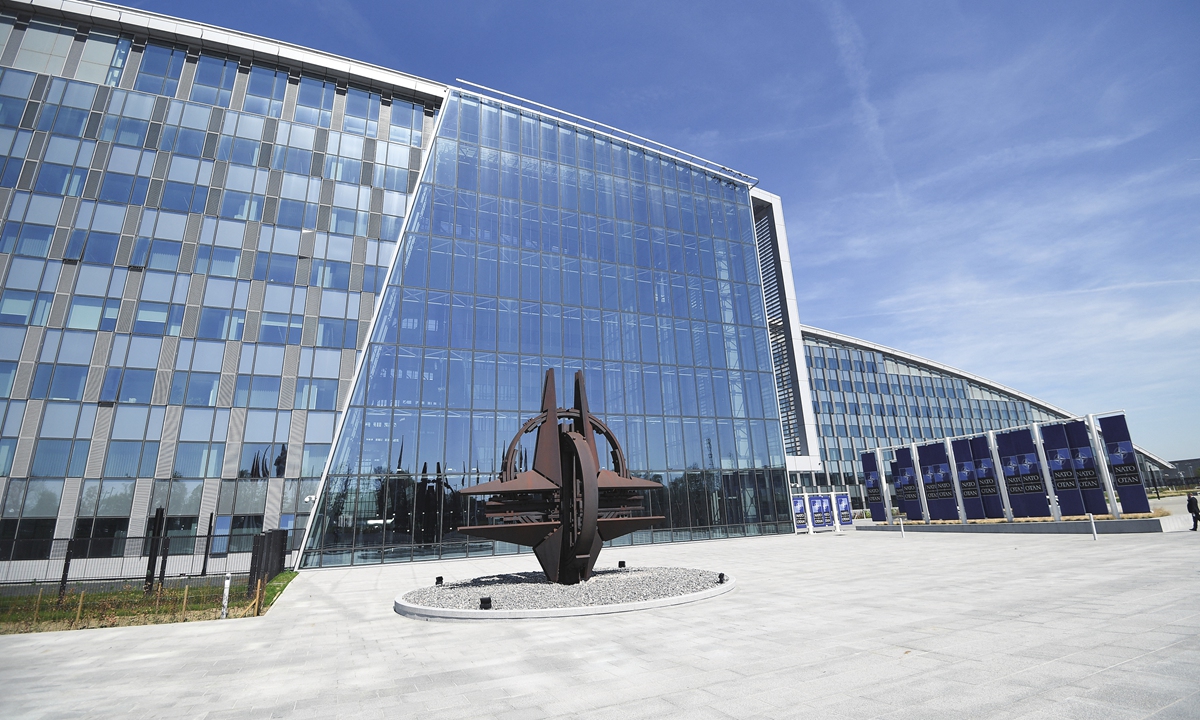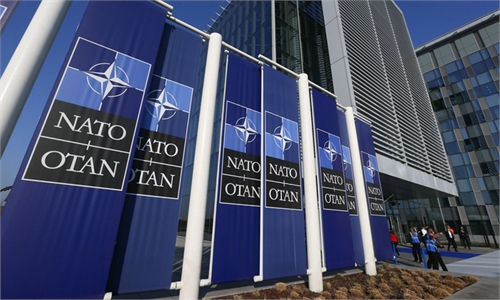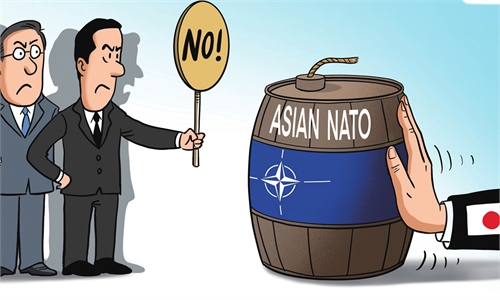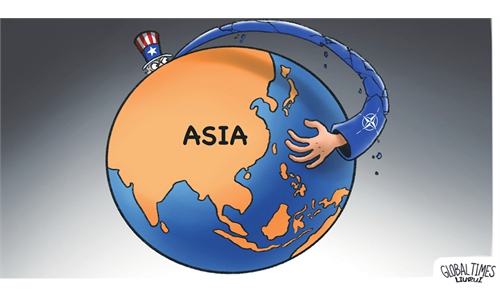
Forecourt sculpture at the new NATO headquarters Photo: AFP
As candidates for many important positions in the next US administration have been announced, NATO has a growing sense that it will once again face a White House known for its "NATO skepticism." While it seems that NATO's strength and position are returning to an upward trajectory, the transatlantic military bloc is likely to be subject to a "violent storm."The first question concerns the direction of the Ukraine crisis. According to the BBC, "a former adviser to president-elect Donald Trump said the incoming administration will focus on achieving peace in Ukraine rather than enabling the country to gain back territory occupied by Russia." In the future, the US may also use military aid as a bargaining chip to ask Ukraine to make a clear commitment to not joining NATO, so as to facilitate peace talks between Russia and Ukraine. This would be a significant blow to NATO.
History shows that NATO's primary strategic adversary remains Russia, and only by opposing Russia can the bloc garner vital strategic resources. If the US were to facilitate a cease-fire between Russia and Ukraine, it could be seen as a failure for NATO, which has invested enormous efforts and material resources in the Russia-Ukraine conflict. This would also mean that the transatlantic alliance's role as the "guardian of the free world" in the face of Russia will come to an abrupt end. As a result, future eastward expansion and defense enhancement could face hurdles.
The second issue is military spending among NATO members. Although the bloc's European members have significantly increased defense spending in recent years, driven by pressure from Washington and the Ukraine crisis, NATO leaders remain uncertain whether the incoming US administration will consider these efforts sufficient. NATO Secretary General Mark Rutte has been urging European countries to allocate over 2 percent of their GDP to defense. However, the problem is that, if the military spending target is raised further, many European countries may be unable to cope with the burden. Therefore, military spending targets could reignite tensions between the US and Europe regarding NATO under the next US administration.
Moreover, the fundamental issue is NATO and Europe's security architecture, or in short, the role of the US in European security. Dan Caldwell, a defense expert familiar with the thinking inside Trump's national-security advisory circle, told Politico in July that the Trump administration would expect a "radical reorientation" of NATO, as it envisions to "significantly and substantially downsize America's security role - step back instead of being the primary provider of combat power in Europe, somebody who provides support only in times of crisis."
This means that in specific areas of defense, the US will retain its existing commitments, such as nuclear protection and the maintenance of air, maritime and major military bases, while requiring Europe to rely on its own resources for major infantry, armor, artillery and logistical forces.
This repositioning also could lead to a new interpretation of NATO's Article 5, the cornerstone of NATO's collective defense obligations. However, since the interpretation of this Article is quite flexible, some observers claim that it does not imply that a NATO member state must take action in response to a military attack.
In fact, the future US administration retains the option to withdraw from NATO. In 2023, a legislation requiring that any presidential decision to exit NATO must have either two-thirds Senate approval or be authorized through an act of Congress was signed into law. However, this law may not significantly constrain the decision of the next US president as one might think, given the president's authority over foreign affairs and the Republican-controlled Congress. In other words, what NATO will face in the next US presidency will be a completely new transformation, and even a NATO without the US could be one of the possibilities.
Rutte was among the first world leaders to congratulate Trump on his election victory, saying that "through NATO, the US has 31 friends and Allies who help to advance US interests, multiply American power and keep Americans safe." Rutte's words could not hide his apprehension about NATO's future under the next US president. In fact, it has become an urgent question that NATO must address to understand what kind of "NATO 2.0" will be created in the next four years of transatlantic interaction and how to correct its course and hedge against the potential turbulence that Washington may cause.
The author is executive director of the Institute of European Studies at the China Institutes of Contemporary International Relations. opinion@globaltimes.com.cn



